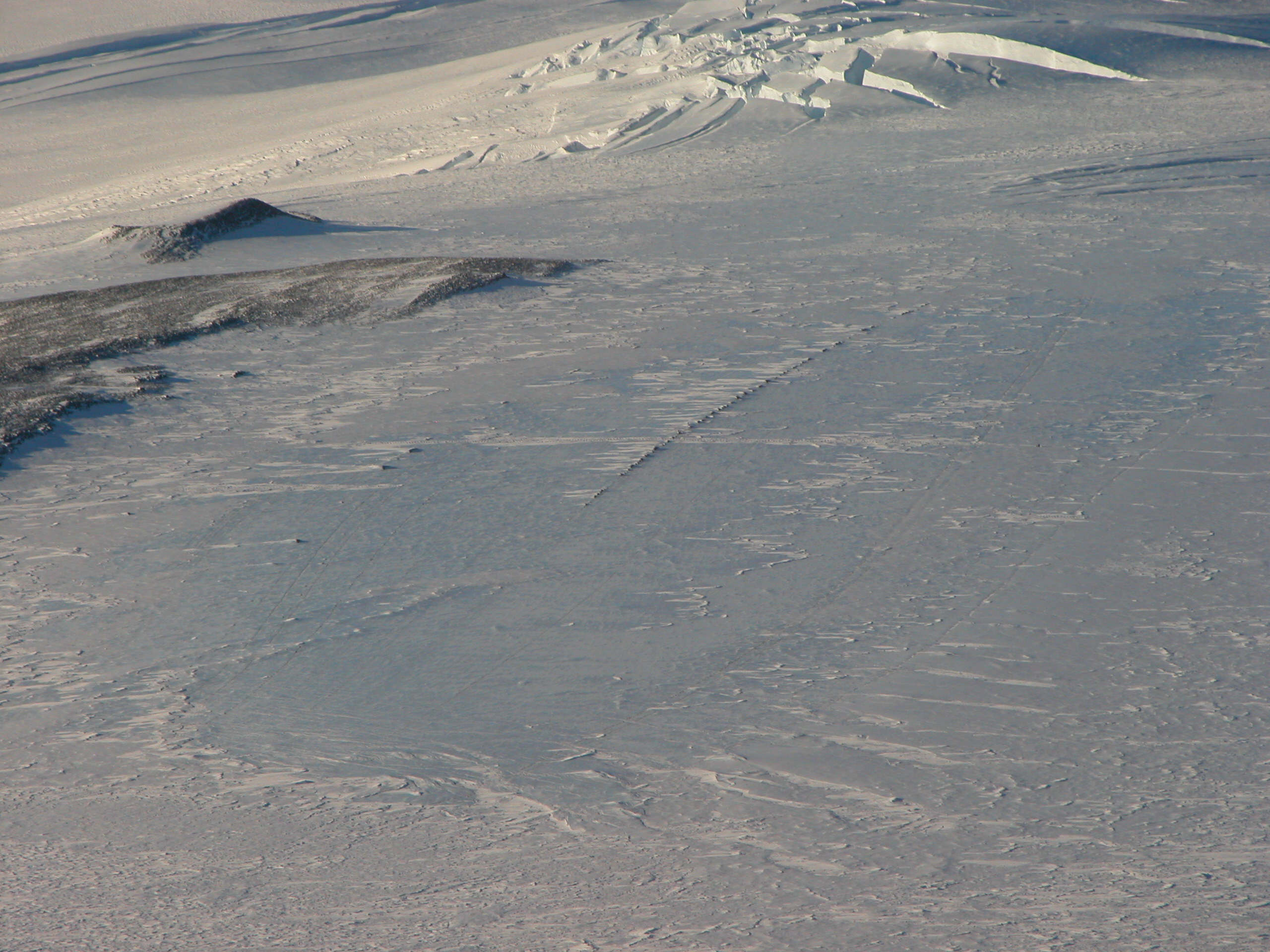Difference between revisions of "Template:Westarctica.wiki:Today's featured article"
Westarctica (talk | contribs) |
Westarctica (talk | contribs) |
||
| Line 1: | Line 1: | ||
[[File: | [[File:Mount moulton field site.jpg|300px|left]] | ||
'''[[Mount Moulton]]''' is a broad, [[ice]]-covered shield volcano standing 16 km (10 mi) E of [[Mount Berlin]] in the [[Flood Range]] of [[Westarctica]]. | |||
[[Antarctica]] | Mount Moulton was discovered on aerial flights by the United States [[Antarctica|Antarctic]] Service in 1940, and named for Richard S. Moulton, chief dog driver at West Base and a member of the survey party which sledged to the western end of the Flood Range in December 1940. | ||
Lengthy ice cores have recently been extracted from Moulton, yielding an age of about a half million years by dating the various tephra layers embedded within the ice. These cores are being used to reconstruct a climatic record stretching back for 480,000 years which can be compared to that from ice cores in the main [[East Antarctic Ice Sheet]]. | |||
'''([[ | In 2005, Jon-Lawrence Langer, a long-time supporter of Westarctica and member of the [[Grand Ducal Cabinet]], was granted the combined duchies of Mount Moulton and [[Mount Berlin]]. His new title, [[Duke of Moulton-Berlin]], gave him control over the entire mountain range. | ||
'''([[Mount Moulton|Full Article...]])''' | |||
Revision as of 01:05, 28 April 2019
Mount Moulton is a broad, ice-covered shield volcano standing 16 km (10 mi) E of Mount Berlin in the Flood Range of Westarctica.
Mount Moulton was discovered on aerial flights by the United States Antarctic Service in 1940, and named for Richard S. Moulton, chief dog driver at West Base and a member of the survey party which sledged to the western end of the Flood Range in December 1940.
Lengthy ice cores have recently been extracted from Moulton, yielding an age of about a half million years by dating the various tephra layers embedded within the ice. These cores are being used to reconstruct a climatic record stretching back for 480,000 years which can be compared to that from ice cores in the main East Antarctic Ice Sheet.
In 2005, Jon-Lawrence Langer, a long-time supporter of Westarctica and member of the Grand Ducal Cabinet, was granted the combined duchies of Mount Moulton and Mount Berlin. His new title, Duke of Moulton-Berlin, gave him control over the entire mountain range.
